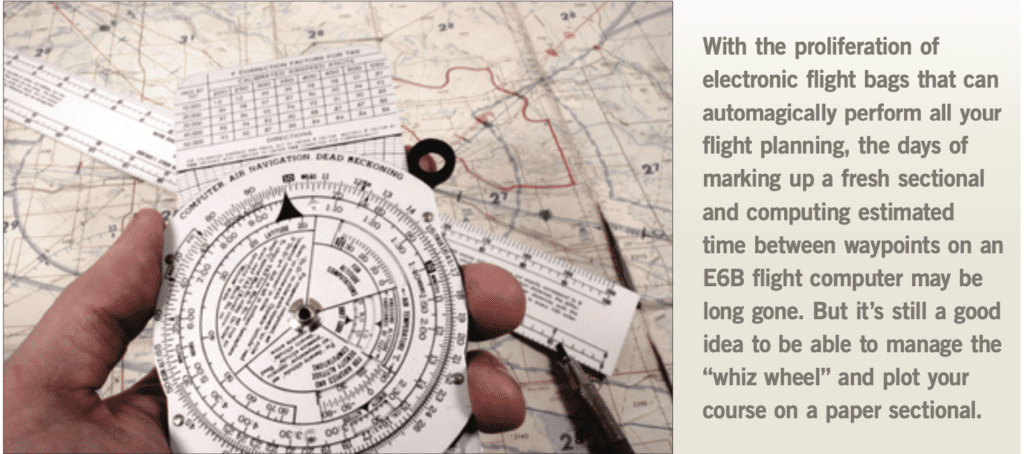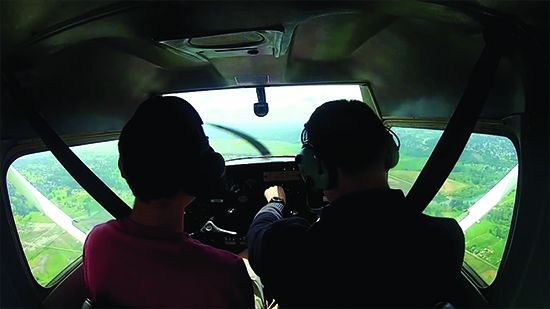I learned to fly “the old-fashioned way,” in a Cessna 152 with its roots firmly in the Eisenhower administration. It had seemingly endured approximately one million hours. I had various flight instructors—none of them were any good, of course, in my eyes, because I had 14 hours of flight time and I was in my early 20s. Of course, they were good instructors; I just didn’t know it because I was young, rebellious and, let me just say it, stupid. “Stoopid,” even.
Old Yeller
One fine day after hours and hours of training, I was ready for my “initial solo.” See, the U.S. Air Force, which was paying for my civilian flight training, would only pay for so many hours, so suddenly, I was “ready.”
On the last touch-and-go with my instructor, whom I nicknamed “Old Yeller,” the airplane was drifting left, drifting left after takeoff and more left, and lefter and lefter! I wasn’t really quite sure how to steer it to the right, and wondered if we’d clear the tower.
True to his nickname, the instructor yelled, then yelled louder as we drifted closer and closer to the tower at Fargo’s Hector International Airport. I could tell by the look in their eyes as we flew by about eight feet away that the tower folks were busy wishing they had an emergency escape pod.
The instructor yelled, “Okay, okay! Now just land safely and I’ll sign you off to go solo!” I must have landed safely, because off I went, solo! Holy moley. The airplane took off and climbed a lot better with only one person on board. Also, there was less yelling in the cockpit. I went around the pattern and did touch-and-goes, and then flew north of town to the “practice area.”
The “practice area” was just some farmland north of Fargo, stretching to the North Pole. There was no special training area frequency to monitor; there was no designation for the area on the map, just “north of the airport.” There was no one up there at all, and there still isn’t.
I started doing left turns and right turns, yanking and banking, and somehow managed to put the aircraft into the beginning of a spin.
Whoa! I was literally trying to read the “spin recovery technique” written on the yoke in front of me, but it was inconveniently turned sideways. Finally, I just leveled the yoke and pushed forward a little, and it flew out of the rapid, tight little left turn that I had managed to put the airplane in. I did not tell the instructor about that when I landed. So, I survived my first solo flight.
Cross Countries
After some further browbeating—I mean dual instruction—I went for my solo cross-country flight. My instructor and I meticulously planned it all out. At the time, I had no respect for how hard it is to be a CFI and teach beginners. (Many years later when I became a CFI and taught beginners, I realized the saying, “What goes around comes around,” was invented by flight instructors. As a CFI, I’d tell my students all the dumb, dangerous stuff I did but make it sound like some other pilot did it. This is how the pros do it.)
The plan was for me to fly from Fargo to Bemidji, Minnesota, and full-stop there. Then I’d go from Bemidji to his uncle’s farm strip somewhere in Minnesota. This farm airstrip was grass, of course, and was probably really short; I forget. His uncle had a gas tank so I could refuel the airplane.
So I take off and head toward Bemidji, feeling every inch the accomplished pilot. Look at me—solo cross-country!
Back then, we had no GPS. We had paper charts, black pens and some kind of timekeeping device. So I flew along with a non-digital wrist watch and my sectional chart with a black pen line on it, with “waypoints” that were circled.
I would fly along the black line looking at the ground and looking out the window at the ground, checking the compass, checking my watch, trying to find the next waypoint—usually a lake or railroad/road intersection, since there aren’t many towns in Minnesota.

Not In The Traffic Pattern
Suddenly ahead I saw some little lake in the middle of nowhere with cattails or some kind of tall vegetation all around the edge of the lake. This was a very small lake, more like a big pond or slough, really. I push forward on the yoke and dive down to look at the lake. Every loose item in the cockpit suddenly floated. Whoa—negative Gs! Fun! Look at my water bottle, it’s floating! In my face!
I pulled back on the yoke, climbing quickly, then pushed over again, making everything float again in the cockpit. I had never experienced much—in fact, any—negative Gs when I was training with my flight instructor. Especially in the traffic pattern. I idly wondered why—then found out why quite soon.
I did the “pull up and push over” maneuver four or five times, diving at the lake, then pulling up, and then suddenly felt sick. I thought, “Oh my goodness—I’m coming down with the flu and I’m flying by myself—this is dangerous! If I get so sick I can’t fly, there’s nobody to save me!”
So I leveled out and flew straight and level for a while. After some time I realized, “You idiot, that’s airsickness, not the flu.” Soon, it went away.
So I flew on, straight and very level, to Bemidji. It turns out I was supposed to close my flight plan. I know that now, in 2023, but in 1986, somehow I didn’t. I no sooner landed and shut down, when some guy walks up to me and says, “Can you sit in the cockpit of my airplane and put your feet on the brakes? I have to turn the propeller by hand to start it.” I got inside, stood on the brakes, and he hand-propped it. Then we switched places somehow, and he taxied away.
When I was ready to takeoff, somebody from the little FBO building came running out and said, “Hey, are you Matt Johnson from Fargo?” I said, “Yes,” wondering how he knew this tidbit of information. He said, “You’re supposed to close your flight plan with the FAA when you land. We were getting ready to launch search and rescue.”
I thought, “Flight plan? FAA?” I also wondered if this guy had any airsick pills. So he said he would close the flight plan for me, and call off the search and rescue, on account of me being alive and all. I heard him referring to me as a “loon” when he was talking to his buddies. The loon is Minnesota’s state bird. I was so proud.
Finding The Strip
I took off and flew west over Minnesota toward the farm airstrip. So now I’m a little rattled. I had made myself a little bit airsick, I hadn’t closed my flight plan with my Favorite Aviation Agency and gotten mildly scolded, and even helped a guy hand-prop his airplane.
So now I am very carefully looking at the ground and very carefully comparing it to the chart and my watch and the compass. When I get to about minute to go and don’t see the town, I start to panic. Suddenly, there it was! Right in front me. I fly on, a lot more confident with this entire “map-watch-ground” thing and ahead of me, as planned, I see the farm strip.
As I came in for a landing, the airplane was in a hefty crab into the hefty crosswind. As I descended below the the tall corn bordering the airstrip, the plane instantly snapped out of the crab. I didn’t crash into the ground, the barn, the corn or my instructor’s uncle, who was calmly standing right on the edge of the airstrip. He called my flight instructor in Fargo to let him know I got down safely. I think I overheard him say the word “loon,” and again I swelled with pride.
Nothing Abnormal
After a while, I was ready to take off. From the time I had landed until I took off, I had forgotten all about the wind. The wind was still blowing pretty hard, but the tall corn still blocked it. I took off and after I got about eight feet in the air the airplane snapped into a massive crab.
This was really quite refreshing, this flying sideways after all that straight-and-level flight earlier, plus my near-airsick episode, and I screamed. With joy. Joy, that’s it. That’s what I screamed with. But I was away! I was climbing, climbing, master of the air again.
I landed back in Fargo, and my instructor asked me, “How’d it go?” I said, “Everything was fine; nothing abnormal.” Θ
Matt Johnson is a former U.S. Air Force T-38 instructor pilot and KC-135Q copilot. He’s now a Minnesota-based flight instructor.




